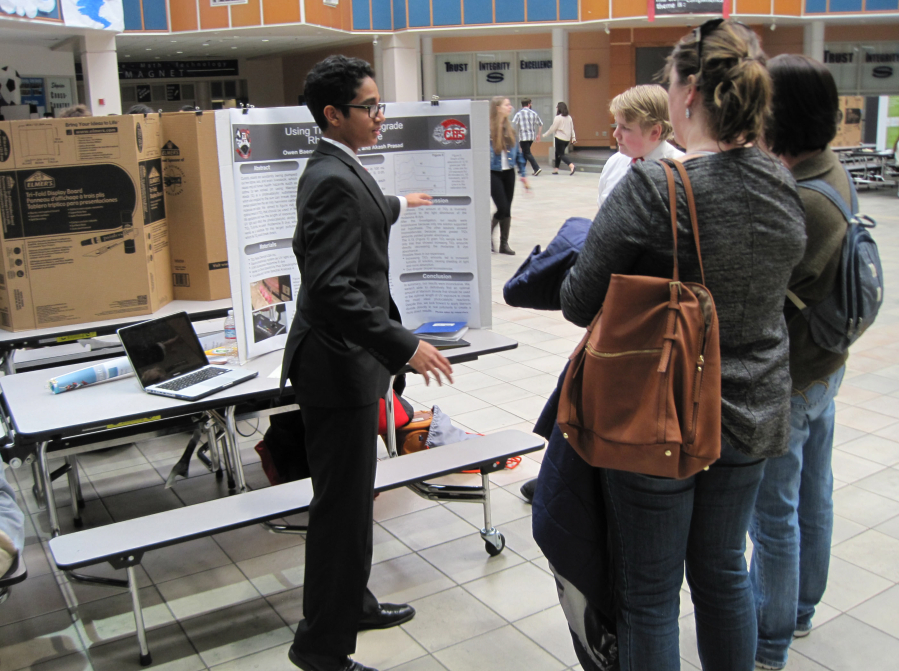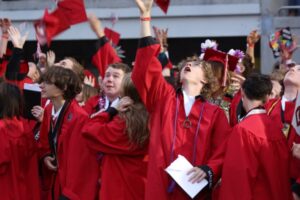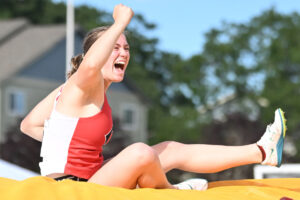Camas High School students have competed in the Southwest Washington Science and Engineering Fair for more than 10 years, and in most of those years they’ve done fairly well.
“Part of it is knowing the system,” said Derek Jaques, Camas School District’s career technical education (CTE) director. “The kids understand that and know what it takes to compete. They’re lucky to have great mentors and teachers, and the partnerships that we have with local businesses and community members are a big reason we do well at these events.”
Twenty-four Camas High School students competed at the 2019 fair, held Saturday, March 2, at Skyview High School in Vancouver, and 22 of those students won a prize.
Both “Best in Fair” honors went to Camas students — Rahul Ram for “Origin Mechanism of Ovarian Germ Cell Teratomas,” and Gareth Starratt and Julian McOmie for “Implementing LiDar in a Simultaneous Localization and Mapping System.”
“(The competitors are) high-achieving students who are heavily involved in research and Advanced Placement coursework,” Jaques said. “They’re typically headed to four-year universities. They’re amazing kids. They volunteer in the community and are often athletes. They’re well-rounded students.”





